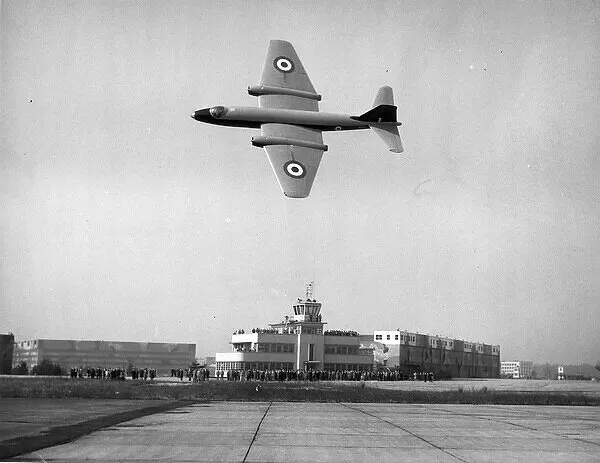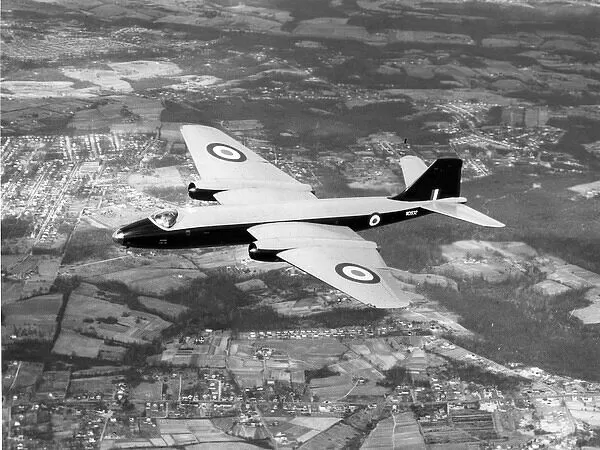
On 2 December 1951, English Electric Canberra B Mk.2 WD932 disintegrated in flight during 4.8g maneuver at 10,000 feet, near Middle River, Maryland. Major Harry M. Lester and Captain Reid Johns Shaw ejected, though Shaw was killed when his parachute failed to open. The accident was believed to have resulted from a problem with fuel management which caused the airplane’s center of gravity to shift aft.
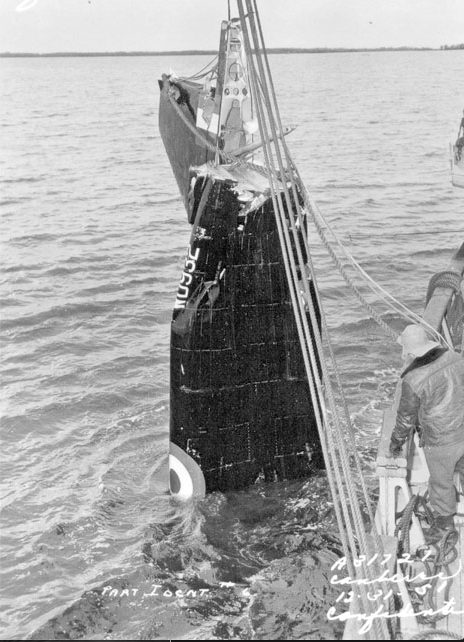
Canberra Jet Bomber Blows Up Over Eastern Shore
ONE OF TWO AIR FORCE MEN ABOARD DIES; OTHER PARACHUTES TO SAFETY
Both from Middle River Area; Record-Making Plane Explodes ‘With Noise That Almost Rocked Earth’; Tail Assembly Cracks Off In Dive
A British Canberra jet bomber that had rocketed across the Atlantic Ocean in 4 hours and 37 minutes last winter blew up over the Eastern Shore yesterday “with a noise that almost rocked the earth.”
One of the two Air Force officers aboard was killed when his parachute failed to open. The other took to his ‘chute and was not seriously hurt. Both lived in the Middle River area and both were attached to the Air Research and Development Command here.
The officer killed was Capt. Reid Shaw, father of three children, who lived in Burleith Manor.
Major Harry M. Lester, pilot of the light bomber, landed in a tree near Centreville and was taken to Memorial Hospital in Easton for treatment of head and eye injuries.
Much of the wreckage of the plane landed in small bits on the estate of the late John J. Raskob at the mouth of the Chester River. The rest was found in the water just off shore on the Love Point side of the river about 6 miles west of Centreville.
Eyewitness Account
The plane had taken off for a test flight at 2.38 P.M. from the Glenn L. Martin Company’s airport east of Baltimore. The company is building a modified version of the Canberra here.
About an hour later the plane’s tail assembly cracked off as the fast jet was in a dive.
A navy pilot flying close by reported he saw white smoke trailing from the twin-jet bomber, then black smoke and an explosion.
Edward Elburn, 23-year-old commercial fisherman who was gunning in a field near the river, gave this eyewitness account of the accident:
“As I was watching the plane—which was flying pretty high—she exploded with a noise that almost rocked the earth.
Clouds of Dense Smoke
“Both wings snapped off, then the whole thing seemed to come apart in pieces.
“Clouds of dense black smoke poured out of the ship and hung in the sky over it for two or three minutes after the explosion.
“Some of the pieces that came raining down looked no bigger than dinner plates.
“I saw a parachute open and start drifting slowly toward Centreville.”
Elburn lives in Rock Hall, about 4 miles from the crash scene. Residents there reported the explosion could be heard loudly and that it was followed by a second when the wreckage hit the ground and water.
Wreck Scene A Security Area
James B. Sward, the ambulance driver who took Major Lester to the hospital, said the flyer told him the plane’s tail ripped off during a test dive.
Both flyers tripped the mechanism that shot their “ejector seats” into the air. Major Lester’s ‘chute opened clear of the plane.
Captain Shaw’s body was found in a field just to the east of the pretentious Raskob estate.
Major Lester’s condition was reported as “fair.”
The Air Force quickly designated the wreck scene as a security area and outsider’s were barred.
Major Lester landed in a hickory tree about 50 yards from the farm home in which Mr. and Mrs. J. Fred Meredith and their daughter, Phyllis Ann, 12, were trimming the family Christmas tree.
Mr. Meredith went to the barn a few minutes later and noticed the parachute in the tree—he did not see the major dangling from its end.
The pilot let himself out and got to the ground, Mr. Meredith continued. His face and head were badly cut.
The major asked for an ambulance, and Mrs. Meredith made him as comfortable as possible with a pillow and blanket while he lay on the ground.
Flight Division Notified
Mr. Meredith said that, in response to a question, Major Lester “said something about the tail end of the plane dropping off.”
At the flyer’s direction, the farmer notified the flight division of the Glenn Martin Company.
Raymond Hollis, a worker on Mr. Meredith’s Poplar Hill Farm, was running to the house to tell of having seen a plane explode in the air when his employer spotted the parachute.
The Canberra, one of two flown from England for use as prototypes of a night bomber being built at Martin’s, set the transatlantic speed record last February 22.
Set Speed Record
It started from Aldersgrove, Northern Ireland, and covered the 2,072 miles of ocean between there and Gander, Newfoundland, in 4 hours, 37 minutes.
On August 31, the second of the two British bombers to be brought here spanned the Atlantic in 4 hours 18½ minutes.
Thousands of Baltimoreans went to the Martin airport last March when the plane that crashed was put on exhibition. Governor McKeldin was one of the dignitaries who inspected the speedy bomber and watch test pilots put it through its paces.
—The Sun, Vol. 230, No. 31, 22 December 1951, Page 1, Columns 7–8, Page 7, Columns 3–4
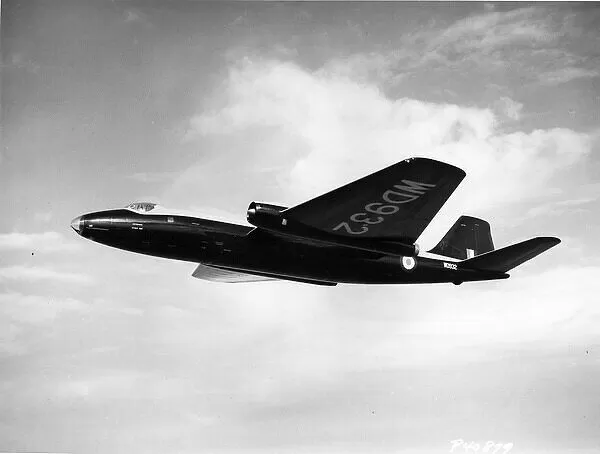
WD932 was the fourth production Canberra B Mk.2, with manufacturer’s serial number 71012.

The wing used a symmetrical airfoil and had 2° angle of incidence. The leading edges of the outer wing panels were swept back 13° 33′, while the trailing edges swept forward 19°53′. The inner wing had 2° dihedral (+/- 10′), and the outer wing, 4° 21′. The total wing area was 960 square feet (89.2 square meters). The variable-incidence tail plane had 10° dihedral.
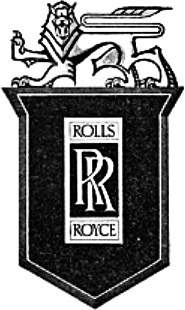
The B.2 had a maximum speed of 450 knots (518 miles per hour/833 kilometers per hour). It was restricted to a maximum 0.75 Mach from Sea Level to 15,000 feet (4,572 meters), and 0.79 Mach from 15,000 to 25,000 feet (7.620 meters). Above that altitude the speed was not restricted, but pilots were warned that they could expect compressibility effects at 0.82 Mach or higher.
The Canberra was produced in bomber, intruder, photo reconnaissance, electronic countermeasures and trainer variants by English Electric, Handley Page, A. V. Roe, and Short Brothers and Harland. In the United States, a licensed version, the B-57A Canberra, was built by the Glenn L. Martin Company. The various versions were operated by nearly 20 nations. The Canberra was the United Kingdom’s only jet-powered bomber for four years. The last one in RAF service, a Canberra PR.9, made its final flight on 28 July 2008.
